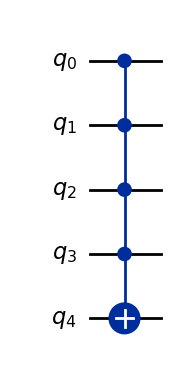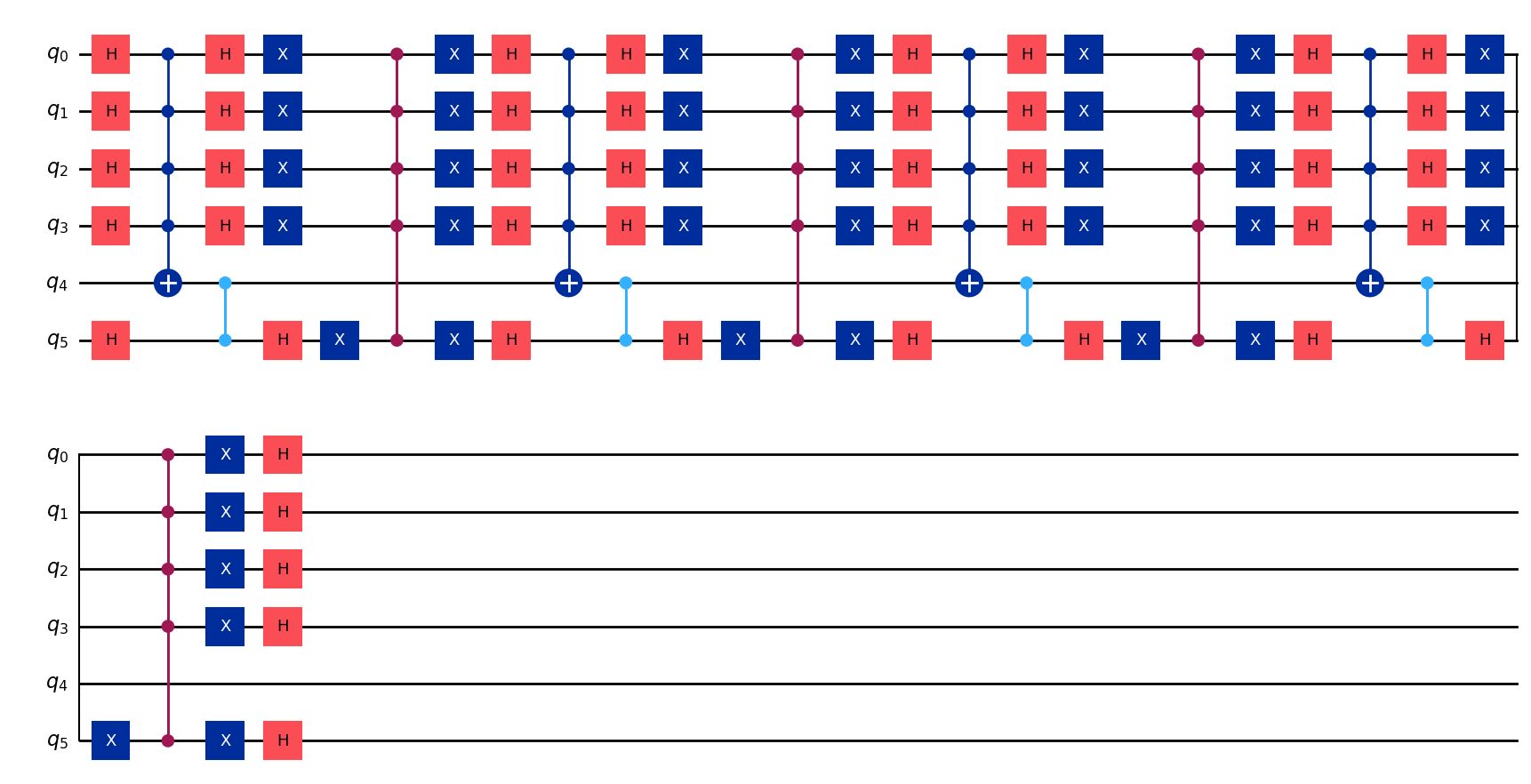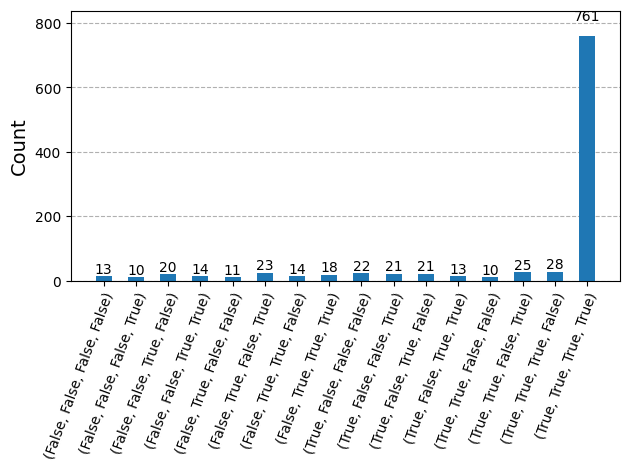Grover search
Qlasskit offer a class to easily perform a Grover search over a qlasskit oracle.
First, we define a function named and_all that returns True iff all the element of an input list a_list are True. We want to use a Grover search to find the input value that led to a True result of the function.
from qlasskit import qlassf, Qlist
@qlassf
def and_all(a_list: Qlist[bool, 4]) -> bool:
r = True
for i in a_list:
r = r and i
return r
The qlasskit compiler will produce an optimized quantum circuit performing the given function.
and_all.export("qiskit").draw("mpl")

We now can use our quantum function as an oracle for a Grover search. For instance, we want to find the input value that yeld to a True value of the function:
from qlasskit.algorithms import Grover
q_algo = Grover(and_all, True)
Qlasskit prepares the quantum circuit for the Grover search:
qc = q_algo.export("qiskit")
qc.draw("mpl")

Then we use our prefered framework and simulator for sampling the result; this is an example using qiskit with aer_simulator.
The Grover class, along with all circuit wrappers in qlasskit, provides utilities to encode inputs and decode outputs from a quantum circuit using the high level type definitions. In the output histogram, it’s now evident that the input leading to a True result in the and_all function is a list where all elements are set to True, aligning with our expectations.
from qiskit import QuantumCircuit, transpile
from qiskit.visualization import plot_histogram
from qiskit_aer import AerSimulator
qc.measure_all()
simulator = AerSimulator()
circ = transpile(qc, simulator)
result = simulator.run(circ).result()
counts = result.get_counts(circ)
counts_readable = q_algo.decode_counts(counts)
plot_histogram(counts_readable)
